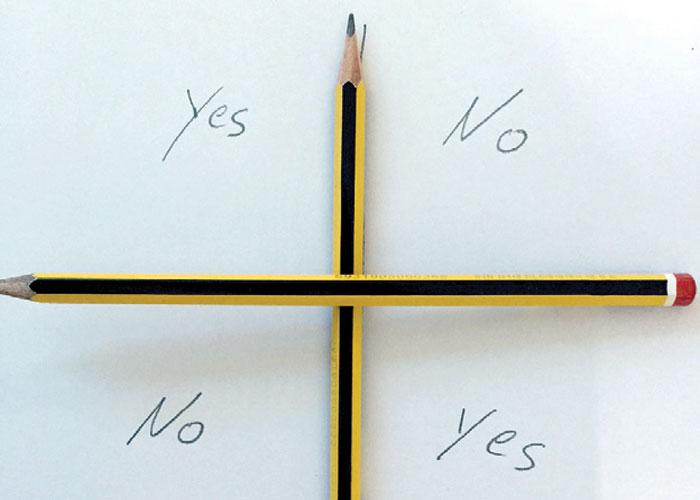The Charlie Charlie Challenge captivated the internet in 2015, sparking heated debate about the legitimacy of the seemingly supernatural phenomenon. This viral game, involving just two pencils and a piece of paper, left many wondering – is the Charlie Charlie game real or fake? Examining the origins, mechanics, psychology and scientific explanations behind the challenge can help unravel the truth.
Introduction: The Charlie Charlie Challenge
In 2015, a curious game called the Charlie Charlie Challenge spread like wildfire across social media. The premise was simple – two pencils were arranged in a cross on a paper with “Yes” and “No”, and players asked “Charlie” questions to receive “answers”.

Videos showed pencils moving purportedly by themselves, with many claiming paranormal activity. But was this phenomenon real or just an internet hoax? The following seeks to unravel the facts behind the Charlie Charlie Challenge craze.
Examining the Origins of the Charlie Charlie Challenge
Roots in Traditional Games
The Charlie Charlie Challenge appears to have roots in traditional pencil and paper games. Some sources suggest it originated from a Spanish game called “Juego de la Lapicera” meaning the Pencil Game, where pencils were used to contact spirits. Others trace it to traditional Mexican games using pencils to speak to the dead.
Spread Through Social Media
While the exact origin is unclear, the game was catapulted into global popularity in 2015 primarily through social media. YouTube and Twitter were key platforms, with videos showing supposed supernatural occurrences during the game gaining millions of views and shares. The hashtag
CharlieCharlieChallenge trended internationally, demonstrating the game’s viral spread.
Exploring the Mechanics of the Charlie Charlie Challenge
Simple Set-Up
The set-up involves just a piece of paper, two pencils, and a flat surface. The words “Yes” and “No” are written on the paper below the pencils. The pencils are then balanced perpendicular to each other in a cross formation.
Ritual of Questions
Participants place their fingers on the top pencil and ask “Charlie” questions out loud. They believe Charlie will rotate the pencil to point at “Yes” or “No” in response. The ritual is repeated for additional questions.
Variations
Some variations involve using more pencils or changing the words to phrases like “Tell the truth” and “You lie”. Different objects like coins were also used instead of pencils in some versions.
Unveiling the Psychology Behind the Charlie Charlie Challenge
Desire to Connect with the Unknown
The game taps into humanity’s innate curiosity with the paranormal. Seeking answers from beyond allows participants to feel they are connecting with the unknown.
Power of Suggestion
The ritual questions combined with anticipation of a response primes participants to interpret pencil movements as supernatural messages. This demonstrates the power of suggestion.
Shared Experience
Performing the ritual collectively amplifies any perceived effects, creating a compelling shared experience that feeds the sense of paranormal activity.
Analyzing the Social Media Impact of the Charlie Charlie Challenge
Rapid Replication & Sharing
The simple set-up using common household items meant the game was easily replicated and shared widely on social media through photos and videos.
Creation of Viral Sensation
Dramatic videos showing pencils spinning coupled with paranormal claims created buzz leading to viral viewership. Some videos gained over a million views.
International Spread
The hashtag trended across the Americas, Europe and Asia demonstrating the rapid global propagation. Major news outlets also covered the phenomenon.
Addressing the Paranormal Claims Surrounding the Charlie Charlie Challenge
Unexplained Movement
Many participants claim the top pencil moves and points towards answers defying gravity and human intervention, indicating paranormal forces.
Strange Occurrences
Some also report strange knocks and banging sounds coming from walls, doors shutting by themselves during the game as signs of spirits summoned by the ritual.
Feelings of Unease
Participants often describe feeling watched, chills or an ominous sense of dread during the game, attributing it to supernatural activities.
Evaluating the Scientific Explanations for the Charlie Charlie Challenge
Ideomotor Effect
The unconscious movements of participants can influence the pencil, explaining its rotation as ideomotor effect rather than external forces. This phenomenon is well documented.
Physics
Subtle vibrations, air currents and the instability of the balanced pencils could physically shift them without any supernatural activity.
Confirmation Bias
An expectation of a paranormal experience can lead players to misinterpret mundane events as supernatural, demonstrating confirmation bias.
Exploring the Cultural Significance of the Charlie Charlie Challenge
Reflects Enduring Interest in Paranormal
The viral spread underscores humanity’s enduring fascination with paranormal phenomena, particularly through games and rituals.
Highlights Power of Suggestion
It also demonstrates the continuing influence myths and folklore have through power of suggestion.
Social Media Trend Impact
The dramatic impact shows the role of social media in propagating trends and shaping viral sensations.
Delving into the Role of Human Suggestion in the Charlie Charlie Challenge
Leading Questions
The ritual of asking “Charlie” questions primes the participants’ expectation of receiving “answers”, influencing their perception.
Shared Expectation
Performing the game as a group builds an expectation of witnessing paranormal activity, further biasing perceptions.
Misinterpreting Mundane Events
These expectations can cause participants to misconstrue insignificant or coincidental happenings as supernatural signs.
Conclusion: Unveiling the Truth Behind the Charlie Charlie Challenge
While the Charlie Charlie Challenge generated much paranormal speculation, the phenomenon can be explained through psychological factors like suggestion and biases coupled with physics. The viral spread underscores the impact of social media trends and humanity’s enduring paranormal curiosity. The game’s simplicity allowed rapid replication, but its popularity ultimately relied on collective belief in supernatural possibilities rather than genuine mystical forces. Careful examination indicates an engaging but invented myth, highlighting the human imagination’s ability to transform the mundane into the extraordinary through the power of suggestion.